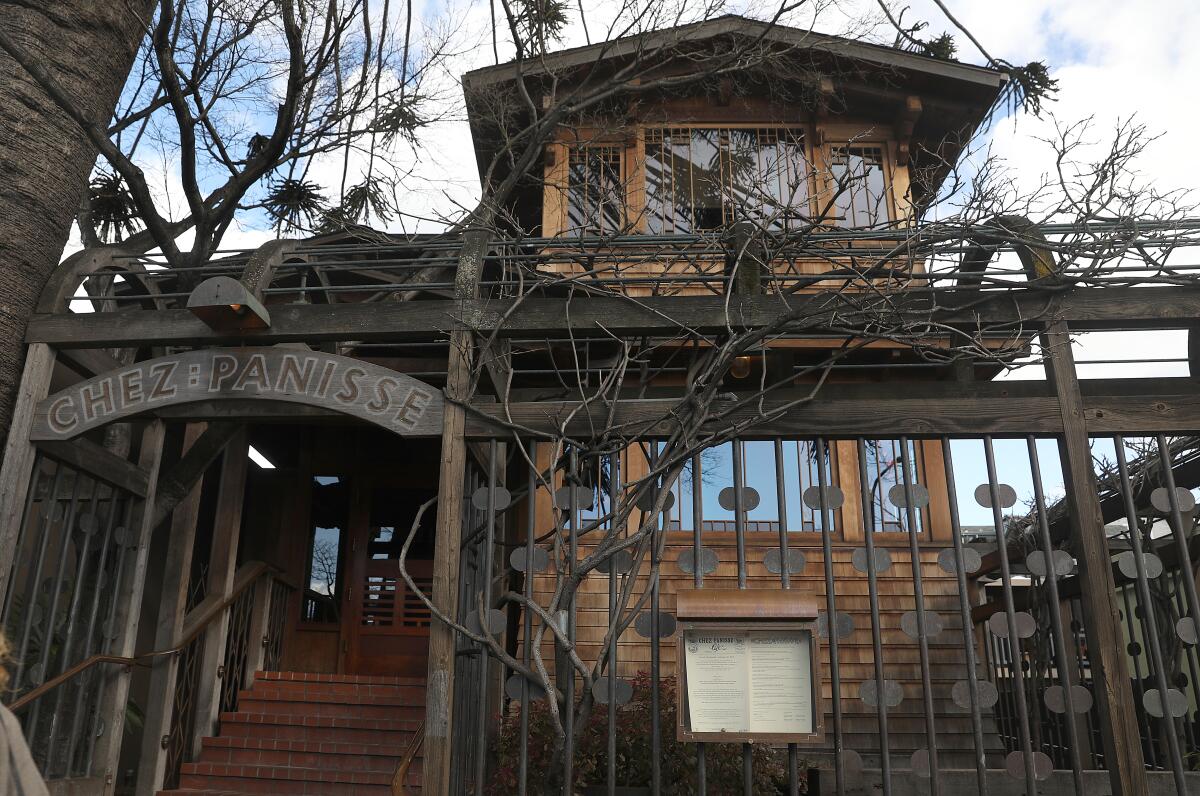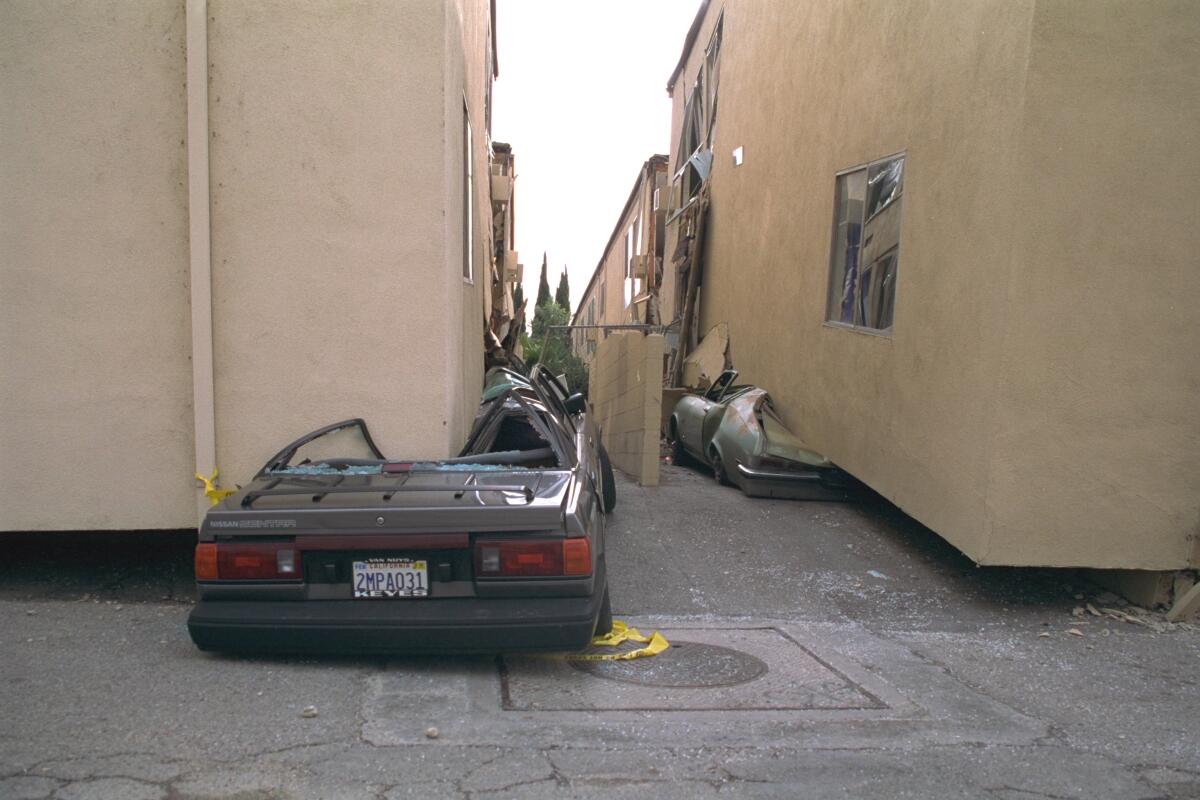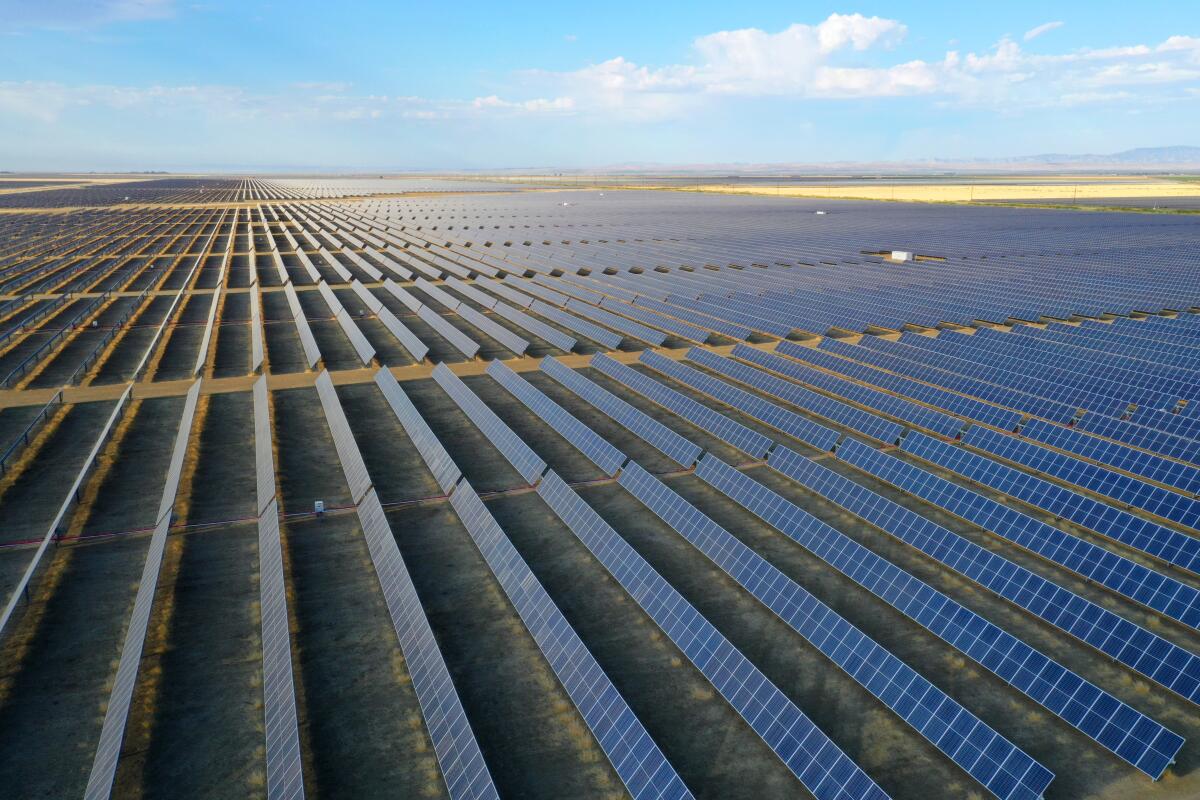The California food resistance can conquer Trump’s Big Mac politics. Take it from this McDonald’s super user

Good morning. Here’s what you need to know to start your day.
- Donald Trump’s return to power comes as food has again emerged as a political symbol.
- Despite an active year for earthquakes, some California suburbs refuse to fix vulnerable buildings.
- “Wicked” and “Gladiator II” jolted the box office over the weekend with a combined $170 million.
- And here’s today’s e-newspaper.
You're reading Essential California
In this newsletter, L.A. Times experts guide you through the most important news, features and recommendations of the day, six days a week.
You may occasionally receive promotional content from the Los Angeles Times.
The arugula and raspberry vinaigrette revolution
For California’s original foodies, the rise of Ronald Reagan’s America in the 1980s was a bit hard to stomach.
Their anti-corporate, organic farm-to-table aesthetic was forged during the protest movements of the 1960s, when Reagan was California’s conservative governor and a joyful antagonist of the counterculture. (One zinger: “Their signs say, ‘Make love not war.’ It seems to me they are not capable of either.”)
It did not help that the Reagan era’s biggest food obsessions involved the Gipper’s love of jelly beans, his administration’s effort to have ketchup be classified as a vegetable and the strange national fascination with government surplus cheese.
But these California rebels didn’t give up and say, “Super size me!” They hunkered down in their kitchens, meticulously sourcing ingredients. They got serious about quality and, well, produced and drank a lot of wine. By the time Reagan left the White House, they were transforming the way America thought about food with “California cuisine” and changed the way we eat.
Historian Kevin Starr captured the shift in his book “Coast of Dreams,” saying they “turned to wine and food once politics, as they had encountered politics in their youth in the 1960s, had — for them — reached a dead end.”

A food resistance that changed the world
It was “intended as an escape from politics but was always managing to reassert itself as a political-generational statement,” he added.
I have been thinking about this moment in the weeks since Donald Trump won a return trip to the White House and food again emerged as a political symbol. During the campaign, Trump spent a few minutes slinging fries at a McDonald’s to show his regular-guy bona fides. Then, last weekend, there was the photo of the “viral dinner party” with Trump, Elon Musk, Donald Trump Jr. and Robert F. Kennedy Jr. digging into Big Macs, fries, Chicken McNuggets and Quarter Pounders on his jet.
No judgment from me. I’m a McDonald’s regular who currently has 640,509 rewards points on my app.
But the rise of “California cuisine” as a response to Reagan offers a model for people struggling to respond to the new Trump era.
Resistance, after all, takes many forms, and Californians know how to play the long game.
In 2008, the year Barack Obama — America’s first Black president — was elected, California voters banned gay marriage. For activists, it was a call to action, with California leading the way in a campaign that ended with the U.S. Supreme Court recognizing same-sex unions.
Then there’s immigrant rights. California now has some of the strongest protections for immigrants here without legal status. This, too, was the outcome of years of fighting after voters in 1994 approved the nation’s most draconian measures against the undocumented, the infamous Proposition 187.

Fancy foods and political divisions
The gourmands behind California cuisine had far more than politics on their mind. To them, the time and the place felt like destiny, wrote Joyce Goldstein in “Inside the California Food Revolution.” You had a generation of rebels obsessed with fresh, local and seasonal food, living in a state with “rich soil and ideal climate to grow a wide variety of ingredients,” she wrote. “People took their food seriously. Using fresh, local, ‘politically correct’ produce and artisanal products and having a philosophy behind the food were of primary importance.”
You see their influence everywhere — in the plethora of organic produce and olive oils on your supermarket shelves and the obsession with ingredients and nutritional values.
California cuisine’s legacy is vast but also mixed. Critics say foodie culture can easily devolve into elitism. Does America really need celebrity chefs and an expertly sourced $300 dinner?
“As Ronald Reagan enshrined trickle-down economics, kneecapped the federal regulatory regime, and unleashed Wall Street’s rapacious id, those who thrived in this greed-is-good era feasted on smoked salmon pizza at Spago in Los Angeles and truffled chicken breast at Jams in Manhattan,” Brent Cunningham wrote in an essay about the political weaponization of food.

The limits of Trump’s McDonald’s politics
Ironically, the culinary movement fomented during the Reagan Revolution may have contributed to the rise of MAGA. Trump’s lionization of McDonald’s is part of a larger conservative meme that casts Democrats as arugula-loving elites completely out of touch with average Joes.
But it’s hard to look at the tumult of 2024 America and find the secret sauce to be fast food. Because, after all, good food is good food no matter its origin story.
Goldstein recounts an early triumph of California food rebels in 1983. Queen Elizabeth was here for a state visit, and the Reagans hosted her at a gala dinner in San Francisco. The menu was über California cuisine: salmon poached in zinfandel, lamb salad with lentils, radicchio, enoki mushrooms, etc.
“The dinner featured many ingredients that were so overused in the early days of California cuisine that they became clichés: raspberry vinegar, walnut oil, and the newly available imported balsamic vinegar, which were poured with impunity on everything,” Goldstone wrote.
Everyone loved it. The California theory of food eventually won the day — and it started not with the mind but with the stomach.
Today’s top stories

Despite an active year for earthquakes, some California suburbs refuse to fix vulnerable buildings.
- Several suburbs closest to the widely felt earthquakes that struck Los Angeles County this summer and fall have no active plans to require retrofits for seismically flimsy “soft-story” apartment buildings.
- In these soft-story buildings, the ground floor has room for a carport, garage or retail shop. They are held up by flimsy, skinny poles that can collapse with side-to-side shaking in an earthquake.
The bird flu virus was detected in raw milk in California.
- State health officials confirmed Sunday that H5N1 bird flu virus was detected in a retail sample of raw milk from the Fresno-based Raw Farm dairy, which has issued a recall.
- The news comes as 29 people, almost all dairy workers, have tested positive for the virus in California. So far, there have been no reports of illness associated with the Raw Farm recall.
Traveling in California ahead of Thanksgiving? Expect rain.
- Weather officials say light rain is expected across the region on Monday and Tuesday. Forecasters expect a reprieve come Thanksgiving.
- The news comes after an atmospheric river storm dumped record rain in Northern California before weakening as it moved down the coast into Southern California.
What else is going on
- California lawmakers flew to Hawaii, Vietnam and Taiwan to discuss big-picture policy ideas.
- A suspect is in custody after leading Los Angeles police on a car chase that ended in the death of a driver in the San Fernando Valley.
- Chuck Woolery, host of “Love Connection” and other game shows, has died at the age of 83.
Get unlimited access to the Los Angeles Times. Subscribe here.
Commentary and opinions
- With Trump vowing tariffs, it might make sense to shop for new appliances now, suggests personal finance columnist Liz Weston.
- Trump’s budget cutters have set themselves up to fail, columnist Jackie Calmes writes.
- Trump has a chance to become a true education president, Editorial Board member Karin Klein writes.
- Aiding Ukraine has been cheap, but caving to Russia would be far more costly, columnist LZ Granderson suggests.
This morning’s must read
California is now producing so much solar energy that the state must increasingly ask solar farms to stop producing to prevent overloading the electric grid. In the last 12 months, power that would have fueled 518,000 California homes for a year has been curtailed or thrown away.
The solar glut raises questions about the state’s plan to generate all its electricity from carbon-free sources by 2045.
How can we make this newsletter more useful? Send comments to [email protected].
For your downtime

Going out
- 🧹 Why is “Wicked” two parts? And what changes were made from stage to screen? The creative team behind Universal’s blockbuster musical breaks it all down.
- 🍿 “Wicked” and “Gladiator II” jolted the box office over the weekend with a combined $170 million.
- 🎶 From Billie Eilish to Metallica, here are 10 must-see concerts this holiday season.
Staying in
- 📚 In her new memoir, “I’m Laughing Because I’m Crying,” Youngmi Mayer offers painful observations on growing up.
- ☕ Here’s a recipe for spiked pumpkin spice coffee.
- ✏️ Get our free daily crossword puzzle, sudoku, word search and arcade games.
A question for you: What’s your favorite Thanksgiving dish?
There’s always at least one dish that really hits the spot. What do you enjoy eating on Thanksgiving?
Email us at [email protected], and your response might be included in the newsletter this week.
And finally ... your great photo of the day

Today’s great photo is from Brian Brady of Seal Beach: Lake Manly as viewed from Dante’s Peak in Death Valley.
Brian, who visited the area with his wife for their 35th anniversary last year, writes: “The lake was revitalized by Hurricane Hilary.”
Show us your favorite place in California! Send us photos you have taken of spots in California that are special — natural or human-made — and tell us why they’re important to you.
Have a great day, from the Essential California team
Check our top stories, topics and the latest articles on latimes.com.
Sign up for Essential California
The most important California stories and recommendations in your inbox every morning.
You may occasionally receive promotional content from the Los Angeles Times.





